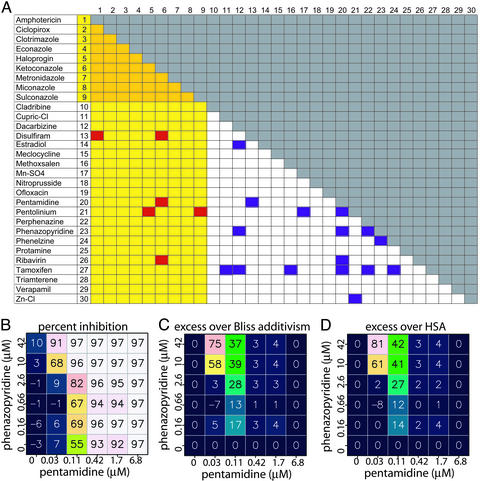Fig. 1.
Multicomponent therapeutics that prevent proliferation of fluconazole-resistant C. albicans. All 435 possible two-component combinations of 30 compounds were tested in duplicate in 36-point dose matrices to identify synergistic combinations. C. albicans cells were treated with compounds in 384-well plates and the extent of inhibition of Alamar blue fluorescence was determined. (A) Overview of synergistic combinations in C. albicans Alamar blue proliferation assay. Yellow columns and rows indicate compounds that are commonly used as antifungal agents. Purple squares indicate combinations for which neither compound is used as an antifungal agent on its own and red indicates combinations for which one, but not both, of the compounds is used as an antifungal agent on its own. (B) A sample combination dose matrix, showing the combined effect of pentamidine and phenazopyridine at six concentrations (including a zero concentration point) each. The experimentally measured inhibition of Alamar blue signal is shown for each pair of combinations. The color of the squares also indicates the level of Alamar blue inhibition. (C) The calculated excess inhibition over the predicted Bliss additivism model. The predicted Bliss additive effect (see text) was subtracted from the experimentally observed inhibition at each pair of concentrations. (D) The calculated excess inhibition over the HSA.

